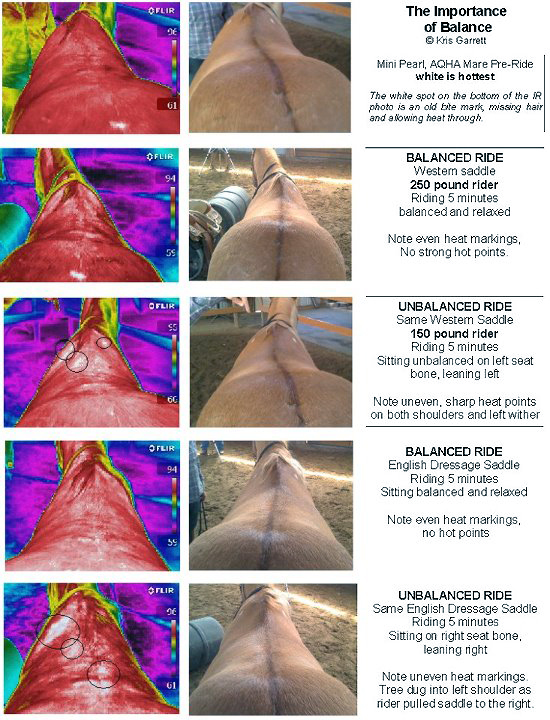How it Works at Painted Bar Stables:Policies
Weigh-In Procedure
An Explanation of Our Weight Policy:Many overweight people do not like to recognize the importance of weight and fitness in horse safety – for both themselves and the horse. A rider who is overweight cannot perform as well because he puts more stress on the same muscles if he is 20 lbs. overweight. If he falls, an injury is more likely because the greater weight puts more stress on the same bones. Imposing a weight restriction on riders is not a matter of prejudice against heavy persons. It's a matter of safety, and in the case of horses and riders, it's also a matter of the soundness and health of the horses involved. It goes without saying that extra lbs., especially if unbalanced, can make a huge difference to the horse. Every pound that is added to a horse puts strain on a horse's back. Too much weight can cause rub-sores from the saddle, strained muscles, and pinching of nerves. Permanent damage such as a "sway back" or deteriorated muscle function can even occur over time. A horse that is child-safe, bomb-proof and completely docile under normal conditions may become agitated, frustrated, fatigued, irritable and even unpredictable when over-stressed by a heavy rider. There are several factors that limit the ability of horses to carry heavier persons.
Most of our horses at Painted Bar Stables weigh 900-1100 pounds and are in phenomenal condition to ride, both in terms of training and fitness. We try to keep our riders at 20% of the horses’ weight when clothed. This means that even our smallest of our horses can easily carry riders weighing 180 with a vast majority of our horses able to carry riders weighing 200-220lbs. We currently only have a handful of horses that can carry riders of 220-250 pounds, but they are in great demand as you can imagine. Breaking down a horse may not be as obvious or as spectacular as breaking down an airplane, but it makes sense that neither machine nor animal should be stressed to (or over the edge of) damage or destruction. Obviously there are many exceptions - riders who own their horses, and private pilots with their own planes, are free to take any risks they care to take, and in the case of a one-off such as a mercy flight or a horse and rider trying to outrun a fire, greater risks would be necessary for survival and therefore more acceptable. But for routine commercial flights and routine rides, it's essential to protect the integrity of the (mechanical or live) conveyance. The practical difference here is that passengers on an airplane, can, under certain circumstances, carry more weight. They often have the option of paying more and having their overweight luggage accompany them, or - if it's their personal size (not weight!) that's the issue, of occupying and paying for two seats instead of one. Size isn't an absolute - it will make no difference to the airplane whether two adjoining seats are occupied by two 150-pound humans or by a single 300-pound human. WEIGHT is an absolute. It WILL make a considerable difference to the airplane whether ALL passengers weigh 150 pounds each, or whether ALL passengers weigh 300 pounds each. Think of the airplane as a multiple-person conveyance, and of the horse as a proportionately smaller and more delicate ONE-person conveyance. Weight can make the difference between a safe flight and a crash - or a safe ride and an accident - or a sound horse and an injured, unsound horse. Asking a horse to carry the maximum amount of weight it can carry without breaking down immediately is not a good policy - like towing a trailer when the weight involved is at or beyond the upper limit of the vehicle's towing capacity, it's a burning formula for trouble. For most ranches, the cost-benefit analysis will quickly reveal that it's not worth putting a horse at risk for the sake of accommodating any individual customer. It takes time and effort to find, train, and condition horses for a good guest riding experience, and those horses must be looked after if they are to continue their work year after year. Most programs are careful to protect their horses' backs and legs, and most stable owners realize that carrying too much weight will break a horse down, sooner or later. Granted, there are still a few "horse rental" businesses that have no rules other than "go where you like, gallop if you like, just give us your money and be back in three hours", but the "standards" espoused by individuals who derive their income from cheap rental strings are strictly bottom-line driven, with the horses viewed as inexpensive, expendable ATVs, and with horse welfare nowhere on the owner's list of priorities. In addition, stables that operate in this manner are generally doing so without benefit of insurance - so this sort of thing really isn't an option for the careful, conscientious, insured stable owner. Most ranches that offer trail rides as an activity, state their rider weight limit clearly and many of them keep a doctor's scales just outside or inside the stable, and weigh riders before allowing them to participate in riding activities. As one owner of one such facility out West explained, the scales were prominently displayed - but hardly ever used. Her wranglers and guides rarely had to weigh anyone, because (a) most people respected the weight limit, and (b) those few individuals who clearly did NOT respect it (e.g., the 300-pound person who chose to ignore the posted "180 pound limit for all riders") would see the scales and suddenly lose all interest in riding.
|
|||||
© Copyright 2016 Painted Bar Stables |
|||||


